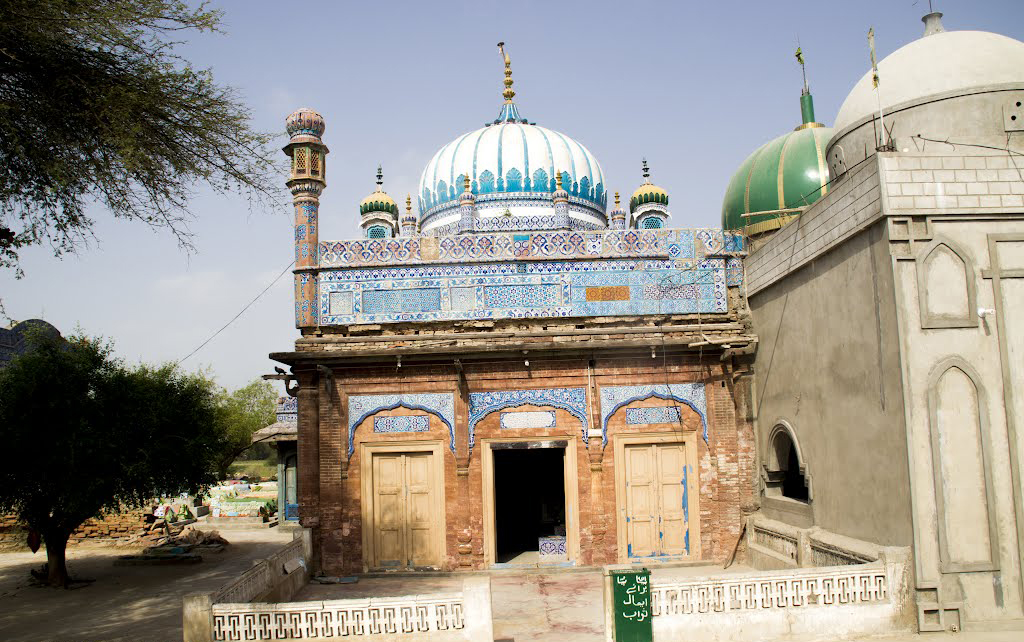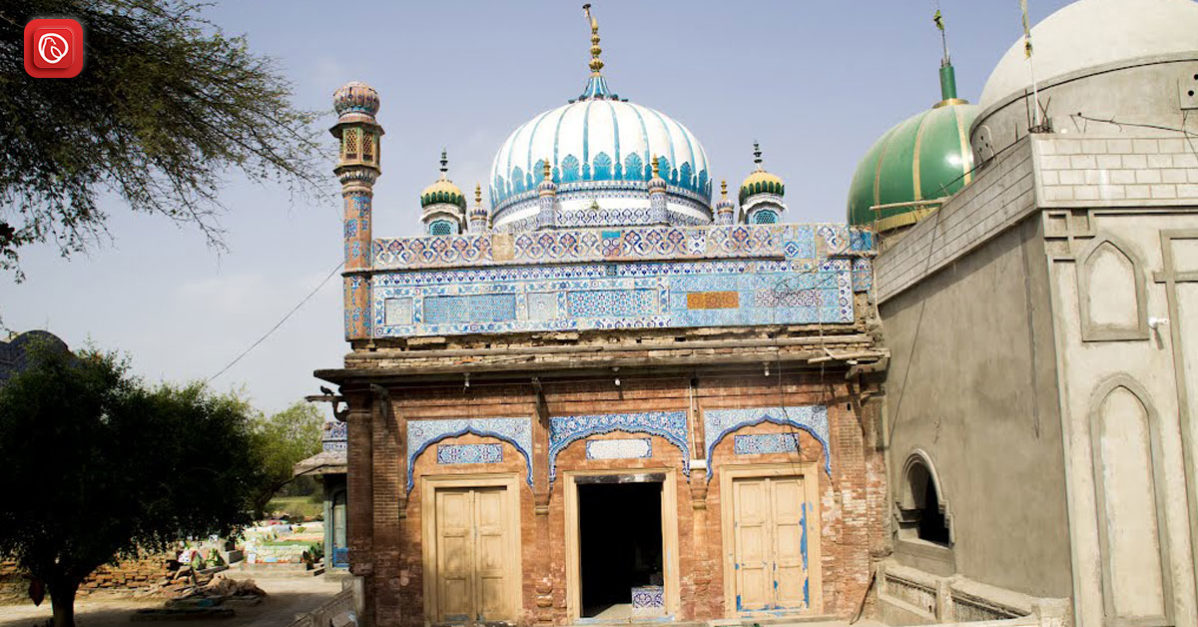Tando Allahyar, located in Sindh, Pakistan, is a city brimming with history and culture. From its founding during the Talpur rule to its evolution under British colonial influence, it has witnessed centuries of change and progress. Today, it stands as a testament to resilience and adaptation, blending the old and the new in a captivating tapestry of tradition.
With its fertile lands and agricultural abundance, the city is renowned as one of Pakistan’s richest regions. Fields of sugarcane, wheat, and cotton stretch as far as the eye can see, sustaining livelihoods and shaping the city’s economy. Mango and banana orchards add to the city’s agricultural wealth, painting the landscape in shades of green and gold.
Religious harmony is a cornerstone of life in Tando Allahyar, where mosques, temples, and shrines stand side by side, reflecting the city’s diverse faiths and traditions. Hindus, Muslims, and other communities coexist peacefully, united by a shared heritage and mutual respect. In Tando Allahyar, the spirit of inclusivity and tolerance shines bright, illuminating the path towards a harmonious future.
Graana.com has prepared a detailed blog about Tando Allahyar, highlighting its history, geography, culture, and other aspects.
History of Tando Allahyar

The history of Tando Allahyar finds its roots in ancient times, where the region was inhabited by indigenous communities. However, concrete historical records of this period are sparse, with only oral traditions and archaeological remnants providing glimpses into the past.
Talpur Rule and Establishment
The city emerged as a significant settlement during the rule of the Talpur dynasty in Sindh. It is believed that the city was founded around 1709 when Talpur constructed a mud and clay fort about 3 kilometers from the present-day town center. This fort, known as “Kacho Qilo,” served as a strategic stronghold for the Mir clan and facilitated trade and commerce in the area.
British Colonial Era
During the British Raj in the early 20th century, the city witnessed further development and expansion. In 1906, a railway station was established, linking the city to major urban centers and facilitating the transportation of goods and people. This period marked a significant transition for the city, as it transformed from a rural township to a bustling urban center.
Independence and Post-Partition Period
Following the partition of India in 1947, Tando Allahyar experienced demographic shifts as Muslim refugees from India settled in the district, contributing to the city’s cultural diversity. The predominantly Hindu population of this city prior to independence dwindled as many migrated to India. Despite these changes, the city remained resilient, adapting to the challenges of a newly independent nation.
Contemporary Developments
In the modern era, Tando Allahyar continues to thrive as a center of agriculture and trade in Sindh. Its fertile lands yield abundant crops such as sugarcane, wheat, and cotton, contributing significantly to the region’s economy. Additionally, the city has witnessed infrastructural improvements and socio-economic developments, reflecting its ongoing evolution and growth.
Throughout its history, Tando Allahyar has endured upheavals and transitions, yet it has remained steadfast in its identity and resilience. From its humble beginnings as a mud fort to its status as a vibrant urban center, the city’s history is a testament to the enduring spirit of its people and the forces that have shaped its destiny.
Geography of Tando Allahyar

Tando Allahyar is situated in the southern province of Sindh, Pakistan. It lies approximately 25 miles northeast of Hyderabad, a major city in the region. The city is located on the road connecting Hyderabad to Mirpurkhas, making it a strategically positioned transportation hub for the surrounding area.
Surrounded by fertile plains and agricultural fields, Tando Allahyar is characterized by its lush greenery and expansive landscapes. The cityscape is dotted with mango orchards, sugarcane fields, and wheat farms, reflecting its status as one of Pakistan’s richest agricultural regions.
Climate
Tando Allahyar experiences a hot and arid climate throughout the year, typical of the region’s semi-desert environment. Summers are long, scorching, and dry, with temperatures often soaring above 100°F (38°C) during the peak months of May and June. The intense heat is tempered only by occasional cool breezes that provide some relief, particularly in the evenings.
Winters in Tando Allahyar are relatively mild, with temperatures ranging from around 50°F (10°C) to 70°F (21°C). However, nights can sometimes be chilly, especially during the coldest months of December and January. Rainfall is sparse and irregular, with most precipitation occurring during the monsoon season from July to September.
Culture of Tando Allahyar

Tando Allahyar, steeped in history and tradition, boasts a vibrant and diverse cultural heritage. From its rich tapestry of festivals to its traditional attire and culinary delights, the city is a melting pot of cultural expressions that reflect the spirit of its people.
Throughout the year, Tando Allahyar comes alive with the vibrant colors and joyous sounds of festivals and celebrations. From religious holidays like Eid al-Fitr and Eid al-Adha to cultural events such as Urs celebrations at local shrines, the city reverberates with the spirit of communal harmony and unity.
The traditional dress in Tando Allahyar mirrors its cultural essence. Women wear the graceful gharara or “parro,” while men opt for the classic Shalwar Kameez with a Sindhi-style cap. These attire choices embody the city’s heritage and evoke a sense of pride among its people. They serve as potent symbols of identity for residents.
Tando Allahyar’s culinary scene is a testament to its agricultural abundance and diverse cultural influences. Mouthwatering dishes like Sindhi biryani, sajji, and various meat and vegetable curries tantalize the taste buds of locals and visitors alike. The city’s bustling bazaars and food stalls offer a plethora of flavors and aromas, inviting gastronomic exploration and delight.
Music and dance are integral components of Tando Allahyar’s cultural landscape, with folk songs and melodies echoing through its streets and neighborhoods. The rhythmic beats of the dholak and tambourine accompany traditional dances, adding joy and energy to communal gatherings and festivities. These musical traditions connect people across generations and celebrate the cultural heritage of the city.
Religions in Tando Allahyar

Tando Allahyar is home to a diverse array of religious communities, each contributing to the city’s cultural mosaic and social fabric. The predominant religion in the city is Islam, with the majority of its inhabitants identifying as Muslims. Mosques serve as centers of worship and community gathering for Muslims in Tando Allahyar, where they come together for daily prayers and religious observances.
Tando Allahyar hosts a vibrant Hindu community alongside its Islamic population. Temples like the Ramapir Temple dot the city, serving as hubs for Hindu worship and cultural events. Despite their minority status, Hindus actively engage in religious festivals and customs, enriching the city’s cultural tapestry. Their presence contributes to Tando Allahyar’s religious diversity and cultural vibrancy.
Tando Allahyar houses numerous shrines and Sufi sanctuaries, revered by Muslims and followers of other faiths. These spiritual hubs draw pilgrims and seekers seeking solace, blessings, and enlightenment. They hold significance beyond religious boundaries, fostering unity and spiritual exploration.
Languages Spoken
In Tando Allahyar, a variety of languages are spoken, reflecting the city’s diverse cultural heritage and population. The primary language spoken by the majority of residents is Sindhi, which holds significance as the regional language of Sindh province. Sindhi serves as the language of everyday communication and is widely understood and spoken by the local population.
In the city, Urdu, the national language of Pakistan, commonly features in official communications, educational institutions, and formal settings. It serves as a lingua franca, facilitating communication among people from different linguistic backgrounds and regions within the country.
Residents of the city, especially those with roots in southern Punjab, speak Siraiki, contributing to its linguistic diversity. While not as widespread as Sindhi or Urdu, Siraiki is understood and spoken by a segment of the population.
Furthermore, Tando Allahyar is also home to speakers of other regional languages and dialects, including Rajisthani, Punjabi, and Balochi. Specific communities or ethnic groups within Tando Allahyar often speak these languages, reflecting the city’s multicultural tapestry.
FAQs about Tando Allahyar
The following are the most frequently asked questions about Tando Allahyar:
What is the significance of Watayo Faqir’s shrine in Tando Allahyar?
The shrine of Watayo Faqir near Rashidabad holds cultural and spiritual importance. It commemorates the Sufi poet Watayo Faqir, attracting pilgrims seeking spiritual enlightenment and blessings.
How has Tando Allahyar evolved since the British Raj?
Since the British Raj, Tando Allahyar has transformed into an agricultural and commercial hub. Infrastructure like the railway station and canal have facilitated this growth, reflecting the city’s progress.
What role does agriculture play in the economy of Tando Allahyar?
Agriculture is vital to Tando Allahyar’s economy, with crops like sugarcane and wheat being significant. Mango and banana orchards further contribute to the city’s agricultural wealth.
How does Tando Allahyar celebrate its cultural heritage?
Tando Allahyar celebrates its heritage through festivals, traditional attire, and cultural events. Festivities like Eid and Urs celebrations, along with traditional garments and music, showcase the city’s cultural richness.
What is the religious demographic of Tando Allahyar?
The city has a Muslim majority, with Sunni and Shia communities coexisting. There’s also a small Hindu population, with mosques and temples serving as places of worship. Despite differences, religious tolerance prevails in the city.
For informative blogs, visit the Graana Blog.




